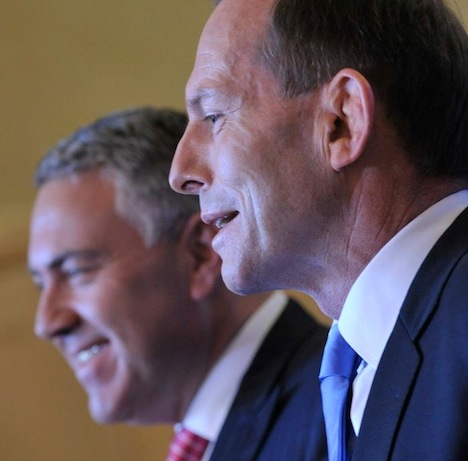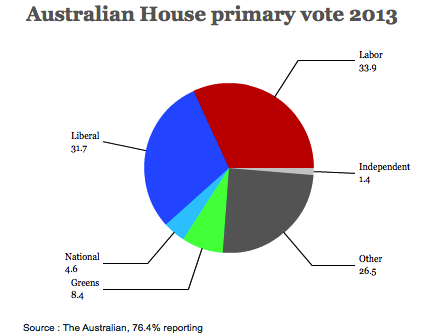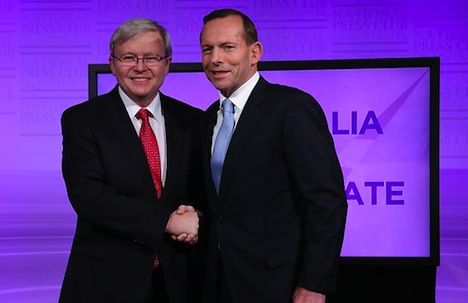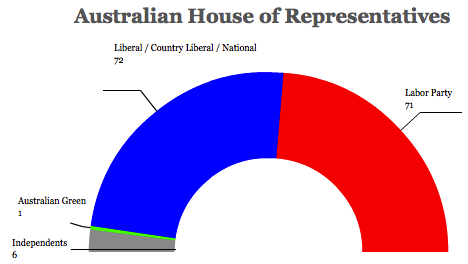You’d be excused if you thought that Australian prime minister Kevin Rudd’s concession speech earlier today sounded more like the victory speech of a man who had just won the election.![]()
In a sense, Rudd did win the battle against expectations — just barely. Even though Rudd will soon become a former prime minister and has already announced he will step down as the leader of the center-left Australian Labor Party, he can breathe a sigh of relief that Labor did not fare as poorly as some worst-case scenarios projected — either under Rudd’s return to the leadership or under former prime minister Julia Gillard. So Rudd was probably right to gloat in his speech that he preserved Labor as a ‘viable fighting force for the future.’ What Rudd didn’t have to say was his belief that Gillard would have led Labor to an absolute collapse.
With three seats left to be determined, the center-right Coalition government led by Liberal Party leader Tony Abbott has 91 seats in Australia’s 150-member House of Representatives to just 54 seats for Labor and two independents, with Adam Bandt, the sole MP of the Australian Greens, holding onto his Melbourne seat despite a strong Labor push. That’s a very strong victory for Abbott, who has picked up 18 seats, but it’s not a historic landslide — four of those gains come from seats formerly held by independents.
Rudd, on the other hand, can claim that his three-month leadership of the party helped avert a catastrophe, though we’ll never know whether Gillard would have done better or worse (and there are some reasons to believe that Labor should have simply stuck with Gillard through September).
You can get all of the seat-by-seat results here, and you can read the pre-election analysis of the marginal seats here.
Here’s the result of the primary vote count:
The most striking piece is that more than one of every four voters chose as their first preference someone other than a Labor, Coalition or Green candidate, and it corroborates that the election was more a statement of disapproval of the Rudd-Gillard governments than an embrace of Tony Abbott.
So what comes next? Within a week, Abbott will likely become Australia’s new prime minister. What does that mean for Australian politics? Continue reading At the dawn of the Abbott era of Australian politics, what comes next?



